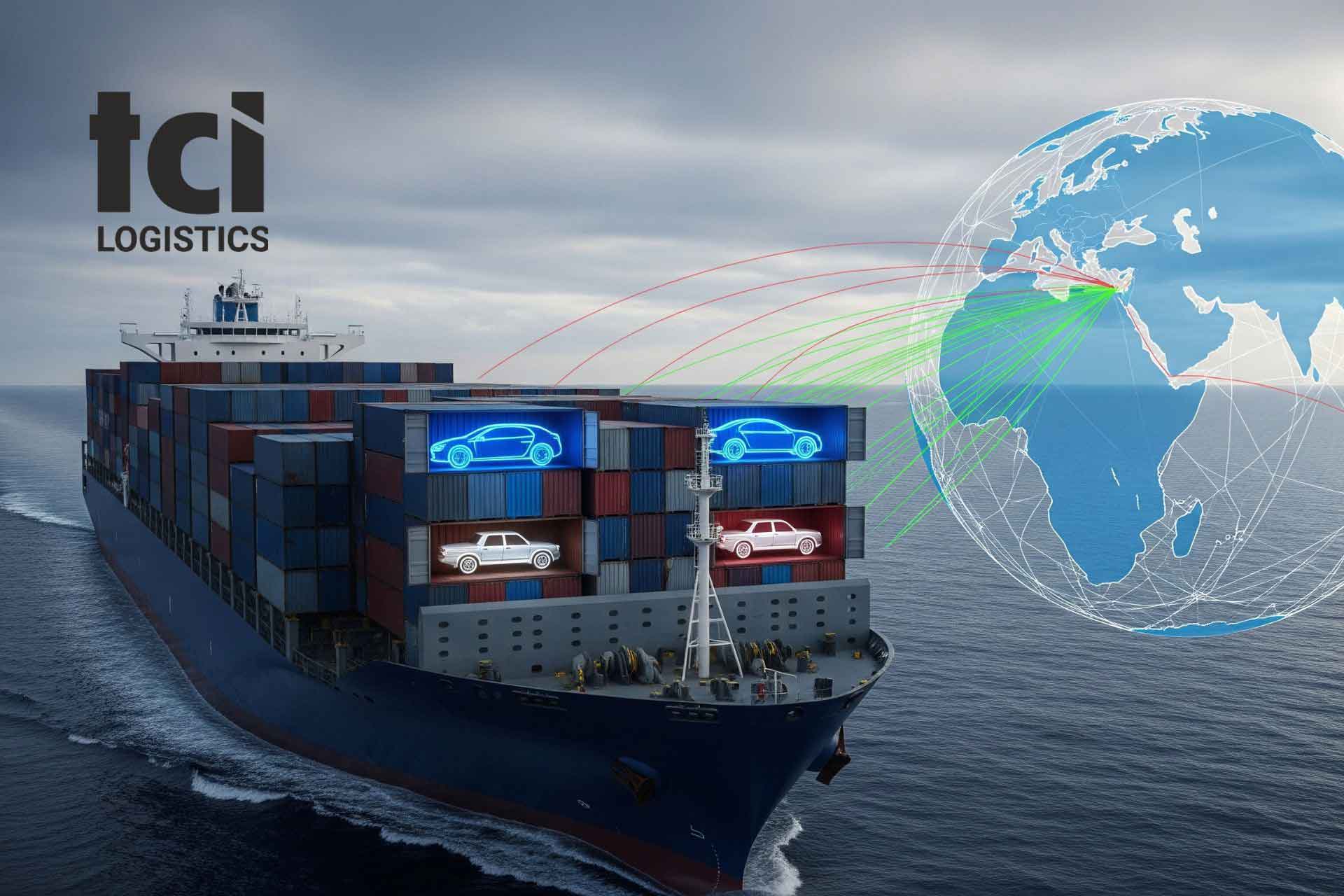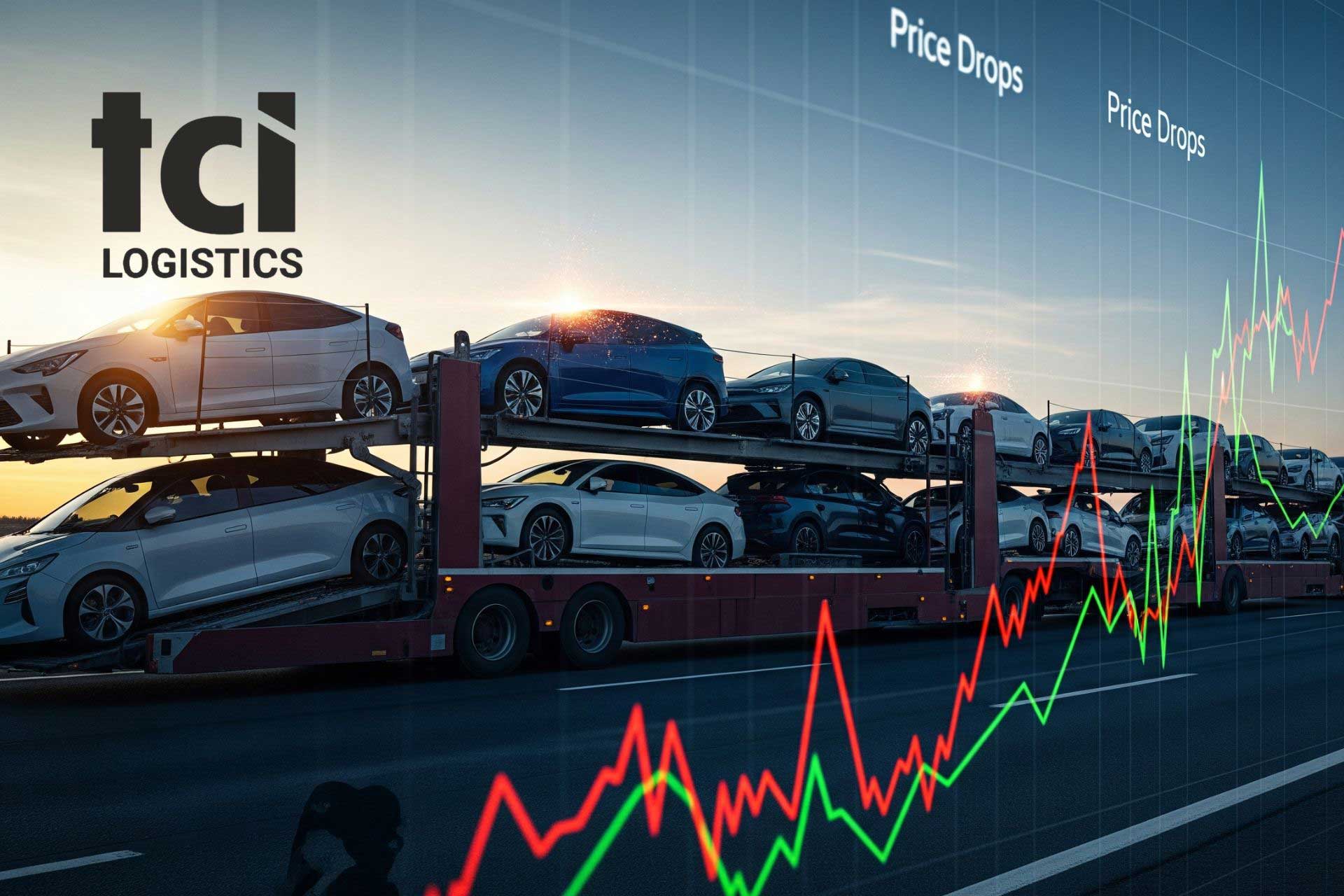
You might think a drop in global car sales would make overseas shipping cheaper. The reality is more complicated: the market is shifting from new to used car exports, creating a unique set of challenges. In 2025, auto sales are slowing in nearly every major region, and the ripple effect is being felt in ports, shipping lanes, and customs offices worldwide.
For anyone planning to move a vehicle across borders this year, the health of the global car market isn’t just background news — it directly influences shipping demand, costs, and availability. Let’s take a closer look at how the 2025 sales slump is reshaping overseas car transport.
A Global Snapshot of Auto Sales in 2025
According to Statista’s Global Auto Market Report, worldwide vehicle sales are projected to decline by about 3–4% in 2025 compared to 2024. This continues a downward trajectory for some markets while others plateau.
- China: The world’s largest auto market is facing a slowdown of around 5%, driven by weaker domestic demand and oversupply in the EV sector.
- Europe: Expected to contract by about 4%, with Germany and Italy seeing some of the steepest drops.
- United States: Sales remain more stable, but high interest rates and affordability issues are limiting growth.
At first glance, fewer new cars being sold might suggest less demand for overseas shipping. However, that assumption misses a crucial detail: the downturn is primarily in new vehicle sales, while demand for used cars and EVs is holding strong — and in some cases, growing.
This shift is already changing how vehicles are shipped. Instead of bulk loads of new sedans or SUVs moving from factories to dealers abroad, the spotlight is turning toward individual used cars and electric vehicles being exported from the U.S. to international buyers.
How Lower Auto Sales Affect International Car Shipping
Reduced Dealer Exports
When new car sales fall in Europe and Asia, it reduces the number of brand-new vehicles being exported in bulk. Factories that once sent shiploads of fresh stock abroad are scaling back production, which lowers dealer-to-dealer shipping volumes.
Rise of Used Car Exports
At the same time, the U.S. used car market is cooling. According to Cox Automotive’s Q1 2025 Market Insights Report, wholesale used vehicle prices are down by 6% year-over-year. For overseas buyers, that’s an opportunity. Vehicles that are more affordable in the U.S. suddenly become attractive exports for markets in Latin America, Africa, and Eastern Europe.
Example: A used Ford Explorer that might sell for $22,000 in the U.S. could fetch $28,000 in West Africa after shipping and import duties. Even with the added logistics costs, the price gap leaves plenty of profit for exporters and dealers abroad.
A Contradictory Trend
The numbers might show global sales slowing, but the need for overseas car shipping doesn’t disappear. In fact, relocation shipping (for expats, military families, and corporate employees) stays steady regardless of new car trends. This steady demand for personal vehicle relocations helps to stabilize carrier rates, preventing them from plummeting even when new car volumes decline. It’s one of the key reasons why shipping prices don’t always fall in line with auto sales data — and why customers shouldn’t assume the 2025 slowdown will automatically save them money.

Key International Vehicle Transport Routes and Their 2025 Outlook
USA–Europe
The transatlantic lane remains one of the busiest, particularly for high-end vehicles and EVs. However, tariffs on European imports and exports are adding new complications. For example, shipping a BMW from New Jersey to Hamburg may now involve $800–$1,000 in added tariffs and customs fees compared to the same shipment a year ago.
USA–Asia
Demand for U.S. EVs is still strong in Asia, with Tesla Model Y, Ford Mustang Mach-E, and Rivian R1T among the most requested exports. But lithium battery shipping regulations are tightening. The International Maritime Dangerous Goods (IMDG) Code requires specialized handling, which can add $500–$1,000 per EV shipment compared to a conventional sedan.
Japan and South Korea continue to import high-value EVs, while emerging markets like Vietnam are beginning to take interest in U.S. electric cars despite infrastructure limitations.
Latin America: A Growth Market
While Europe and Asia cool, Latin America is seeing more inbound vehicles. Popular routes like Miami to Santos, Brazil, are estimated to be experiencing a 20% increase in used vehicle volume. Countries like Chile and Mexico are also importing larger numbers of affordable U.S. sedans and SUVs.
The result? Shipping demand doesn’t shrink across the board — it simply shifts. Latin America’s growth is offsetting some of the declines in Europe and Asia, keeping global shipping lanes active even in a down year for auto sales.
EV Export Challenges in 2025
Electric vehicles are reshaping international vehicle transport costs. The challenge isn’t just demand—it’s compliance. EVs carry large lithium-ion batteries that are classified as dangerous goods under the International Maritime Dangerous Goods (IMDG) Code. That triggers specialized packaging, ventilation, and fire-suppression requirements, plus stricter documentation.
Impact on EV Export Costs and Logistics
- Special handling fees: Compared with a comparable ICE vehicle on the same route, moving a Tesla Model Y or Mustang Mach-E can add $500–$1,000 in battery-related handling and documentation costs.
- Carrier limitations: Not all ocean carriers, consolidators, or ports accept EVs on every sailing. Fewer options can lead to longer lead times and less pricing flexibility.
- Insurance caps: Standard policies often cap coverage around $100,000 per vehicle. High-spec EVs can exceed that quickly, pushing owners to purchase supplemental coverage.
- Port-side inspections: Expect additional inspections or temperature checks in certain ports, which can introduce schedule variance of several days.
Practical note: If you’re exporting an EV to destinations with developing charging infrastructure, factor in destination logistics—secure storage, charger compatibility, and handover times can all affect total cost and timing.
Shipping Costs in a Low-Demand Market: Why They Don’t Always Drop
It’s counterintuitive: fewer global new-car sales should ease pressure on transport… yet overseas car shipping doesn’t automatically get cheaper. Here’s why prices can stay sticky even as sales soften.
Carrier consolidation and fixed costs
Vessels have significant fixed operating costs—crews, berths, fuel contracts, and port agreements. With fewer units, carriers consolidate loads and reduce sailing frequency to maintain utilization. That can mean longer wait windows and, at times, higher per-vehicle pricing to cover fixed expenses.
Port fees, customs, and tariffs
Many cost components are non-variable. Terminal handling charges (THC), port security fees, customs processing, and certain tariffs don’t scale down with volume. For typical U.S.-to-EU shipments, these line items can add $200–$600 per vehicle before ocean freight is even considered.
Fuel and surcharge volatility
Global oil market swings affect bunker adjustment factors (BAF) and emergency surcharges. Even if volume is soft, a spike in bunker prices can erase any savings from lower demand.
Capacity pinch points
RoRo and container capacity isn’t uniform across ports. Popular lanes (e.g., East Coast USA → North Europe) can feel tight while others have slack. Localized bottlenecks keep rates supported on in-demand routes.
Illustrative example: A New Jersey → Germany shipment averaged about $1,450 in 2024. In 2025, despite lower new-car sales, total landed cost remains similar because port fees and surcharges offset softer freight demand.
Practical Advice for Overseas Shippers in 2025
1) Secure space early: Book 4–8 weeks in advance for international lanes, especially if you need containerized transport or you’re shipping an EV. Early bookings create room to compare schedules and avoid last-minute premiums.
2) Match method to vehicle value: Everyday sedans can travel RoRo or in shared containers to keep costs down. High-value EVs, classics, and luxury imports are better off in containerized shipping with elevated insurance limits.
3) Budget beyond ocean freight: Build a realistic estimate that includes THC, customs, duties, destination handling, and potential storage at port. These items can represent a large share of the final bill—especially on EVs and luxury models.
4) Verify insurance and documents: Ask for a Certificate of Insurance (COI) and confirm the policy limit covers your vehicle’s replacement value. Ensure titles, liens, export declarations, and consignee details are accurate before the vehicle reaches port.
5) Use a transparent calculator: Get a live estimate that reflects market conditions and includes fees upfront. Try the TCI Shipping Calculator to benchmark routes and timing before you commit.
Key Takeaways for 2025 Overseas Shipping
Global auto sales are down, but overseas vehicle transport is not a simple supply-and-demand story. As new-car volumes dip, used-car exports and EV shipments are stepping into the spotlight. Meanwhile, fixed port fees, surcharges, and compliance costs keep a floor under pricing.
The takeaway is practical: plan early, choose the right transport method, and price the full door-to-port picture. If you’re exporting a standard sedan, shoulder seasons and flexible dates can keep costs predictable. If you’re moving a premium EV or luxury import, containerization, higher insurance limits, and tighter timelines are worth the peace of mind.
Ready to plan your overseas car shipment? Contact our experts today for a personalized quote and assistance.
Frequently Asked Questions: Overseas Car Shipping in 2025
Does the 2025 global sales drop make overseas car shipping cheaper?
Not necessarily. Fixed port fees, tariffs, and fuel surcharges keep a floor under prices, while used-car exports and EV shipments sustain demand.
Why are EVs more expensive to ship overseas in 2025?
Lithium-ion batteries are dangerous goods under IMDG rules, requiring special handling, documentation, and often containerization—adding roughly $500–$1,000 per shipment.
What routes are most active for overseas car shipping in 2025?
USA–Europe and USA–Asia remain busy for EVs and premium cars, while Latin America (e.g., Miami→Santos) is seeing higher used-vehicle volumes.
How can I lower my international car shipping costs?
Book 4–8 weeks early, choose RoRo or shared containers for standard cars, avoid peak sailings, and compare estimates with the TCI Shipping Calculator.
What insurance coverage do I need for an overseas shipment?
Confirm the carrier’s COI and limits (often around $100,000 per vehicle). For high-value EVs or luxury imports, add supplemental coverage to match replacement value.
